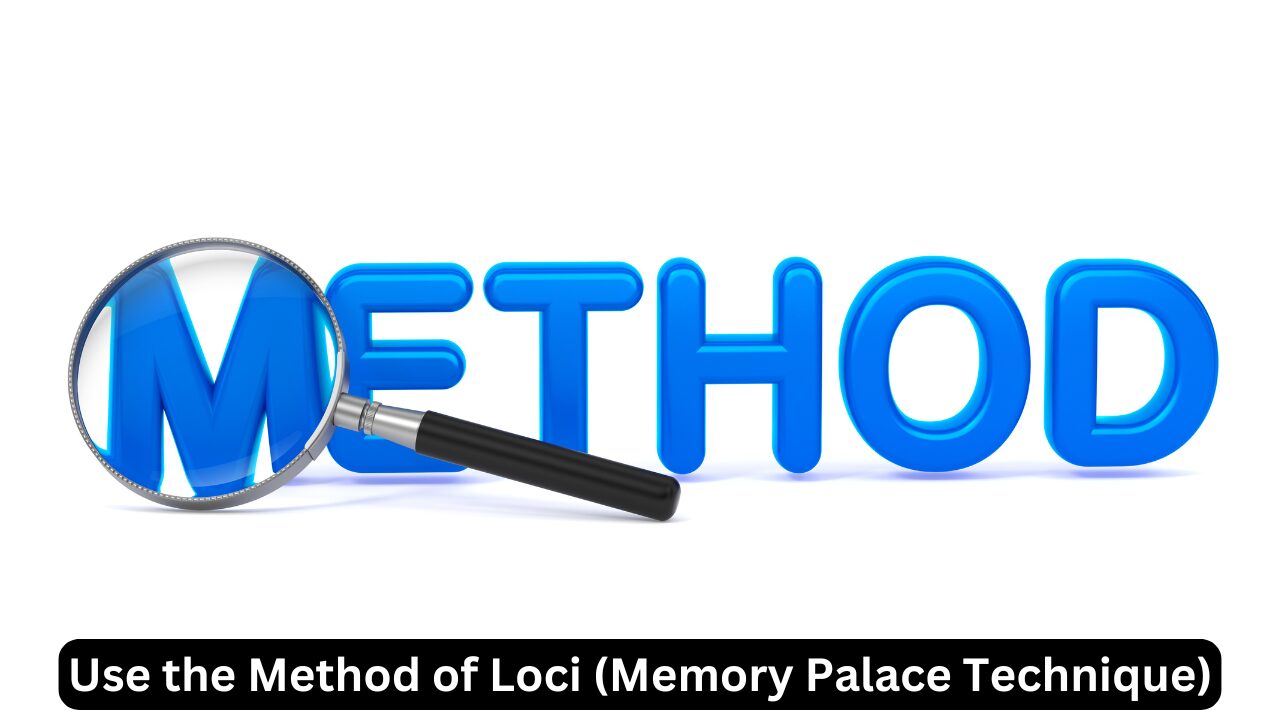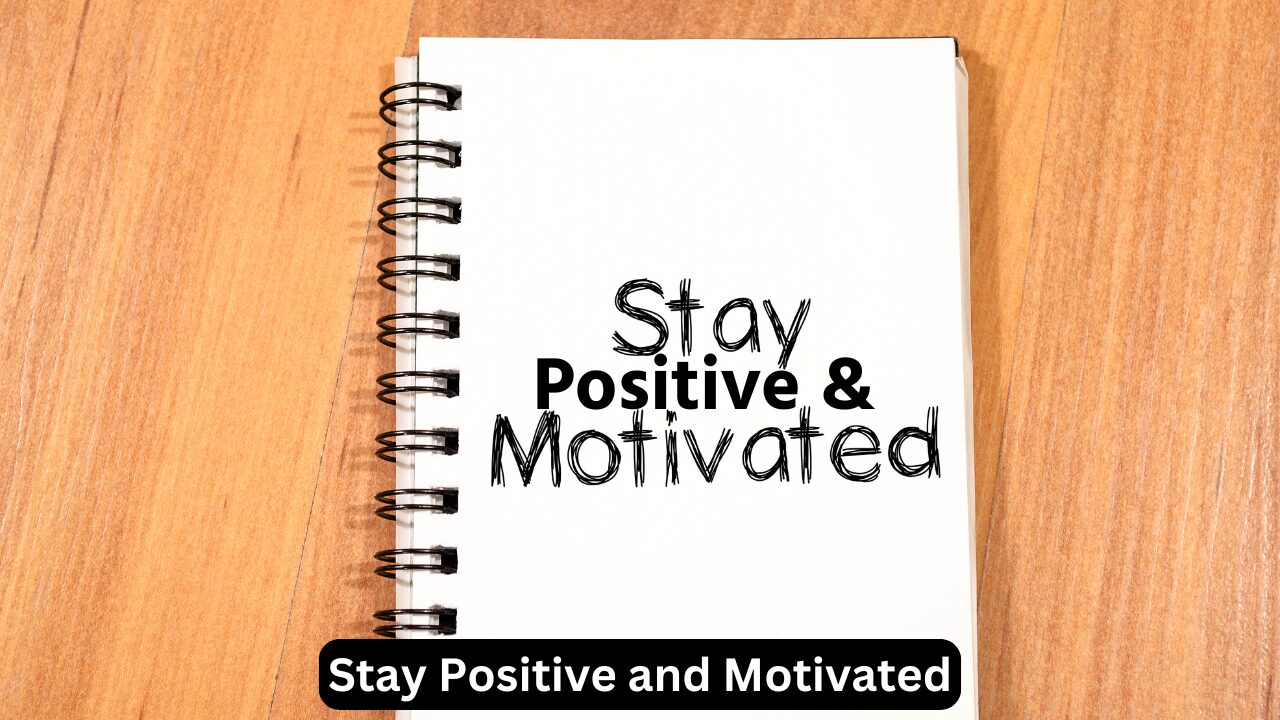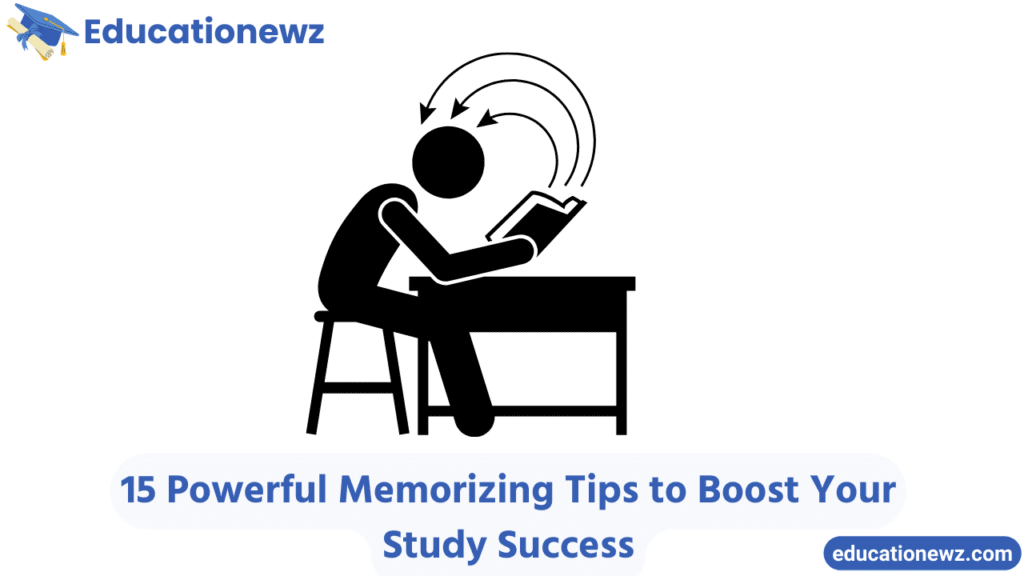Use these 15 memorizing tips to improve retention, recall information effectively, and boost your study performance with scientifically proven methods and practical examples.
Memorization is a critical skill for students and professionals alike. Whether you’re preparing for an exam, a presentation, or simply trying to learn something new, improving your memory can save time and reduce stress. In this article, we’ll explore 15 powerful memorizing tips that will help you retain information longer and recall it faster. Each technique is backed by science and enriched with practical examples, ensuring that you can easily implement them into your study routine.
Why Memorizing is Important
Memorizing is a foundational skill that enhances learning and retention, enabling individuals to effectively recall information when needed. It plays a crucial role in both academic success and professional development by fostering the ability to apply knowledge in various contexts. Memorization strengthens neural connections in the brain, improving cognitive abilities such as problem-solving, critical thinking, and decision-making.
For students, memorizing helps in retaining formulas, historical dates, vocabulary, and other essential details, making exams and assignments more manageable. In the workplace, it allows professionals to recall crucial information like procedures, data, or client details, ensuring better performance and efficiency. Beyond academics and careers, memorization aids in daily life by helping individuals remember names, directions, and important events, thereby building confidence and enhancing social interactions. In essence, strong memorization skills serve as the backbone for learning and applying knowledge across all aspects of life.
1. Visualize Your Learning for Better Recall

Visualization is one of the most effective tools for memory retention. Imagine trying to remember the water cycle. Instead of memorizing the terms “evaporation,” “condensation,” and “precipitation” as plain words, picture a vivid scene: the sun heating a lake, water vapor forming clouds, and rain pouring down. Visualizing helps create mental images that your brain can recall more easily, connecting information with imagery.
Example: When studying biology, imagine yourself walking through a cell, identifying the nucleus as the “control center,” mitochondria as “powerhouses,” and ribosomes as “protein factories.” This creative engagement helps cement information in your mind.
2. Master Spaced Repetition for Long-Term Retention
Spaced repetition involves reviewing material at gradually increasing intervals. Instead of cramming everything in one session, review content after a day, a week, and then a month. This method leverages the brain’s natural forgetting curve to reinforce memory just as it begins to fade.
Example: Use tools like Anki or Quizlet to create digital flashcards with prompts and answers. Let the software remind you to revisit cards you’re at risk of forgetting.
3. Use Mnemonics to Simplify Complex Information
Mnemonics are memory aids that transform complex information into easily memorable patterns using rhymes, acronyms, phrases, or visualizations. They are especially useful for memorizing sequences, lists, or abstract concepts by making the information relatable and easier to recall. Mnemonics leverage the brain’s ability to associate ideas with vivid or familiar patterns, effectively encoding the information for long-term retention.
Examples of Effective Mnemonics
- Planets of the Solar System: Instead of struggling with the order of planets (Mercury, Venus, Earth, Mars, Jupiter, Saturn, Uranus, Neptune), use the mnemonic: “My Very Educated Mother Just Served Us Noodles.” This converts a dry fact into an engaging sentence.
- Colors of the Rainbow: The mnemonic “ROYGBIV” represents the rainbow’s sequence of colors: Red, Orange, Yellow, Green, Blue, Indigo, Violet. To make it even more fun, think of a character named “Roy G. Biv” as a rainbow artist!
- Musical Notes on the Staff: For the lines on a treble clef staff (E, G, B, D, F), use “Every Good Boy Does Fine.” For the spaces (F, A, C, E), simply remember “FACE.”
How to Create Personalized Mnemonics
- Combine Visuals and Humor: If studying biology, imagine mitochondria (the cell’s powerhouse) as little batteries running around inside a cell.
- Use Pop Culture References: For chemistry, if memorizing noble gases (He, Ne, Ar, Kr, Xe, Rn), think of a superhero team: “Helium’s Neon Army Keeps Xenon Radiant.”
- Rhymes and Alliterations: To memorize grammar rules like “I before E except after C,” a rhyme can simplify the learning process.
4. Practice Active Recall
Active recall is the process of retrieving information from memory without looking at your notes. This is more effective than passive rereading because it strengthens your ability to remember information during exams or real-life scenarios.
Example: After reading a history chapter, close your book and try summarizing the main events in your own words. Then, check your notes to fill in gaps.
5. Organize Information Using Mind Maps
Mind maps are visual tools that help structure information hierarchically. Start with the main topic in the center, and branch out into subtopics, keywords, and supporting details.
Example: For a science topic like photosynthesis, place “Photosynthesis” in the center and branch out with “Light Reactions,” “Dark Reactions,” and “Chlorophyll.” Add details like the role of sunlight, carbon dioxide, and water to make the map comprehensive.
6. Teach the Material to Someone Else
Teaching is a powerful tool for mastering any subject because it requires you to organize your knowledge, identify gaps, and explain concepts clearly. By simplifying the material and putting it into your own words, you actively engage with the topic, reinforcing what you’ve learned. For example, if you’re studying the water cycle, try explaining it step-by-step to a friend or even a family member. Start with evaporation, describe condensation, and then move to precipitation, checking if they follow your explanation.
If no one is available to listen, imagine teaching an audience or record yourself explaining the material. For instance, you could stand in front of a mirror and teach the Pythagorean theorem, drawing triangles and solving problems aloud. This practice forces you to verbalize your understanding, helping you notice any uncertainties. Teaching not only enhances retention but also boosts confidence, as you prove to yourself that you fully understand the subject matter.
7. Engage Multiple Senses for Holistic Learning
Incorporating multiple senses can enhance memory retention. When you engage visual, auditory, and kinesthetic learning simultaneously, the brain forms stronger neural connections.
Example: Write down important definitions (kinesthetic), read them aloud (auditory), and highlight key terms in colorful markers (visual). Combining these actions reinforces memory.
8. Use the Method of Loci (Memory Palace Technique)

This ancient technique involves associating pieces of information with specific locations in a familiar space. For example, link each room in your house with a different topic or key point.
Example: Imagine your living room as “World War I,” and place key details like “Archduke’s assassination” on the sofa and “Trench warfare” on the coffee table. As you mentally walk through your home, you’ll recall these details easily.
9. Create a Distraction-Free Environment
Your study environment plays a crucial role in memory. Remove distractions like phones, clutter, or loud music, and set up a dedicated study space with proper lighting and ventilation.
Example: Use tools like Forest App to stay focused, or keep your phone in another room while studying.
10. Break Down Sessions with the Pomodoro Technique
Long study sessions can lead to fatigue, making it harder to retain information. The Pomodoro Technique involves studying in focused intervals (e.g., 25 minutes) followed by a 5-minute break.
Example: After 25 minutes of solving math problems, take a break to stretch or grab a snack. Return refreshed for the next session.
11. Focus on Understanding Concepts
Memorization becomes easier when you truly understand the material. Instead of rote memorizing, break topics down into simpler ideas and connect them to real-world applications.
Example: When studying physics, instead of memorizing formulas, understand how Newton’s laws of motion apply to activities like driving a car or playing soccer.
12. Stay Physically Active to Boost Brain Function
Physical exercise increases blood flow to the brain, enhancing focus and memory. Activities like walking, jogging, or yoga release dopamine and other chemicals that aid cognitive performance.
Example: Spend 20 minutes walking outdoors before your study session to feel more alert and focused.
13. Prioritize Sleep for Memory Consolidation
Sleep is crucial for transferring information from short-term to long-term memory. Skipping sleep after studying significantly reduces retention.
Example: Aim for 7-9 hours of sleep each night. If possible, take a short nap after studying; even 20 minutes can enhance memory.
14. Use Flashcards to Test Your Knowledge
Flashcards are highly effective for memorizing facts, terms, or formulas. Write a question on one side and the answer on the other, and quiz yourself until you can answer effortlessly.
Example: Use flashcards to memorize foreign language vocabulary, such as “Apple” on one side and “Manzana” (Spanish) on the other.
15. Stay Positive and Motivated

Your mindset is the secret weapon for effective learning. Staying positive and motivated not only reduces stress but also improves focus, making it easier for your brain to absorb and recall information. A healthy, optimistic attitude primes your brain to form stronger connections, enhancing your memory retention. When you’re enthusiastic and driven, learning becomes an empowering experience rather than a chore.
A great way to stay motivated is by setting clear, manageable goals. For instance, break your study material into smaller sections and tackle them one at a time. After completing each section, reward yourself—watch your favorite show, indulge in a snack, or take a relaxing walk. These small treats serve as positive reinforcement, transforming studying into a rewarding activity.
Visualization is another powerful tool. Picture yourself acing that exam or delivering a flawless presentation—it boosts self-confidence and keeps you driven. To maintain positivity, surround yourself with motivational quotes, upbeat music, or supportive friends who inspire you to keep going. Remember, when you approach studying with positivity, you create a mental environment that promotes success and makes learning not just effective but enjoyable.
Quick Summary of Memorization Techniques
| Technique | Key Benefit | Example |
|---|---|---|
| Visualization | Creates vivid memory associations | Picture the solar system while learning planets |
| Spaced Repetition | Reinforces long-term memory | Review flashcards at increasing intervals |
| Mnemonics | Simplifies complex data | Use acronyms like “HOMES” for Great Lakes |
| Mind Mapping | Structures concepts visually | Map out a biology chapter |
| Method of Loci | Links details to familiar locations | Memory palace for historical events |
FAQs About Memorizing Tips
1. Why do I forget what I study so quickly?
Forgetting occurs because the brain doesn’t reinforce information. Use spaced repetition and active recall to combat this.
2. Can I use these techniques for any subject?
Yes! These tips are versatile and work for memorizing facts, understanding concepts, or learning languages.
3. How can I make studying fun?
Incorporate games, use rewards, or study with friends to make the process enjoyable.
4. What’s the best time to study?
The best time depends on your natural rhythm. Morning and evening are ideal for most people due to fewer distractions.
5. Do breaks improve memory?
Yes! Short breaks during study sessions keep your mind fresh and prevent burnout.
Conclusion
By integrating these 15 memorizing tips into your study routine, you’re setting yourself up for greater success with less effort. These techniques help you unlock your brain’s full potential, making learning more effective and efficient. Whether you’re using mnemonics, teaching others, or staying motivated, each strategy offers a way to boost memory retention and reduce study-related stress.
Remember, it’s not about working harder but studying smarter. The more you practice these tips, the easier and more enjoyable studying becomes. So, start implementing them today—your future self will thank you! Please follow our blog Educationewz.



